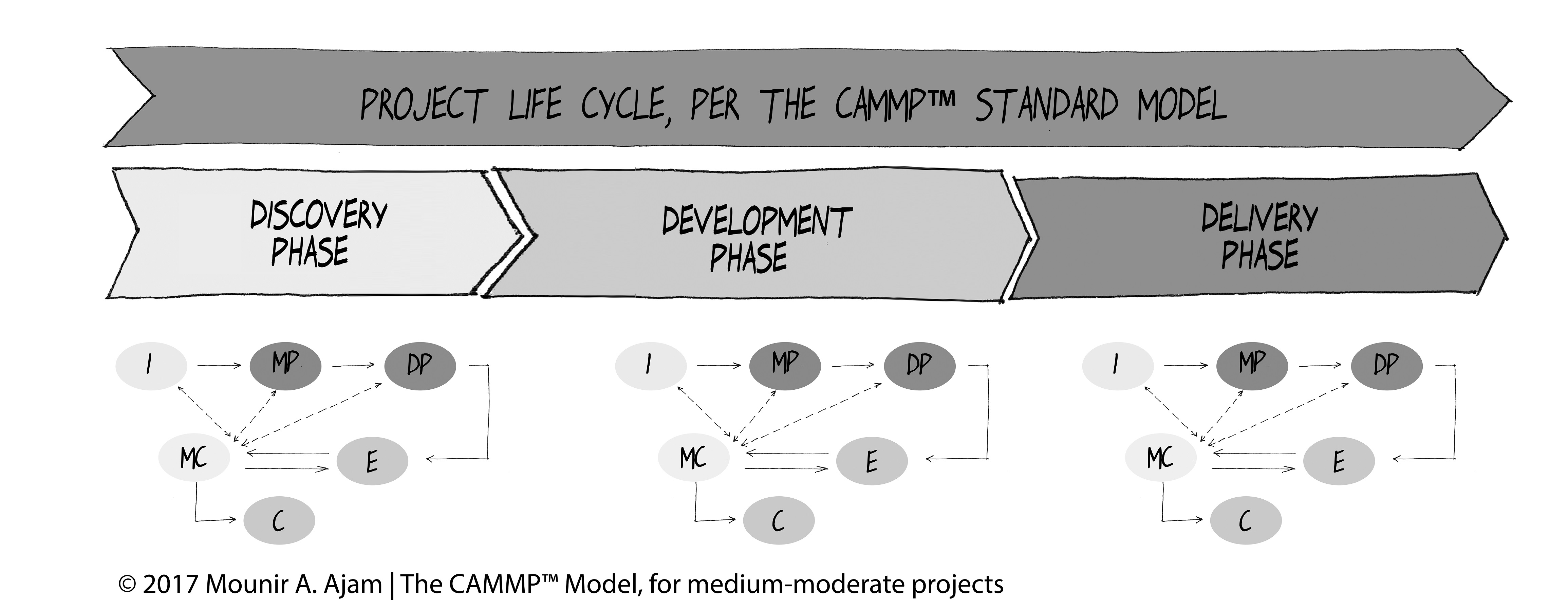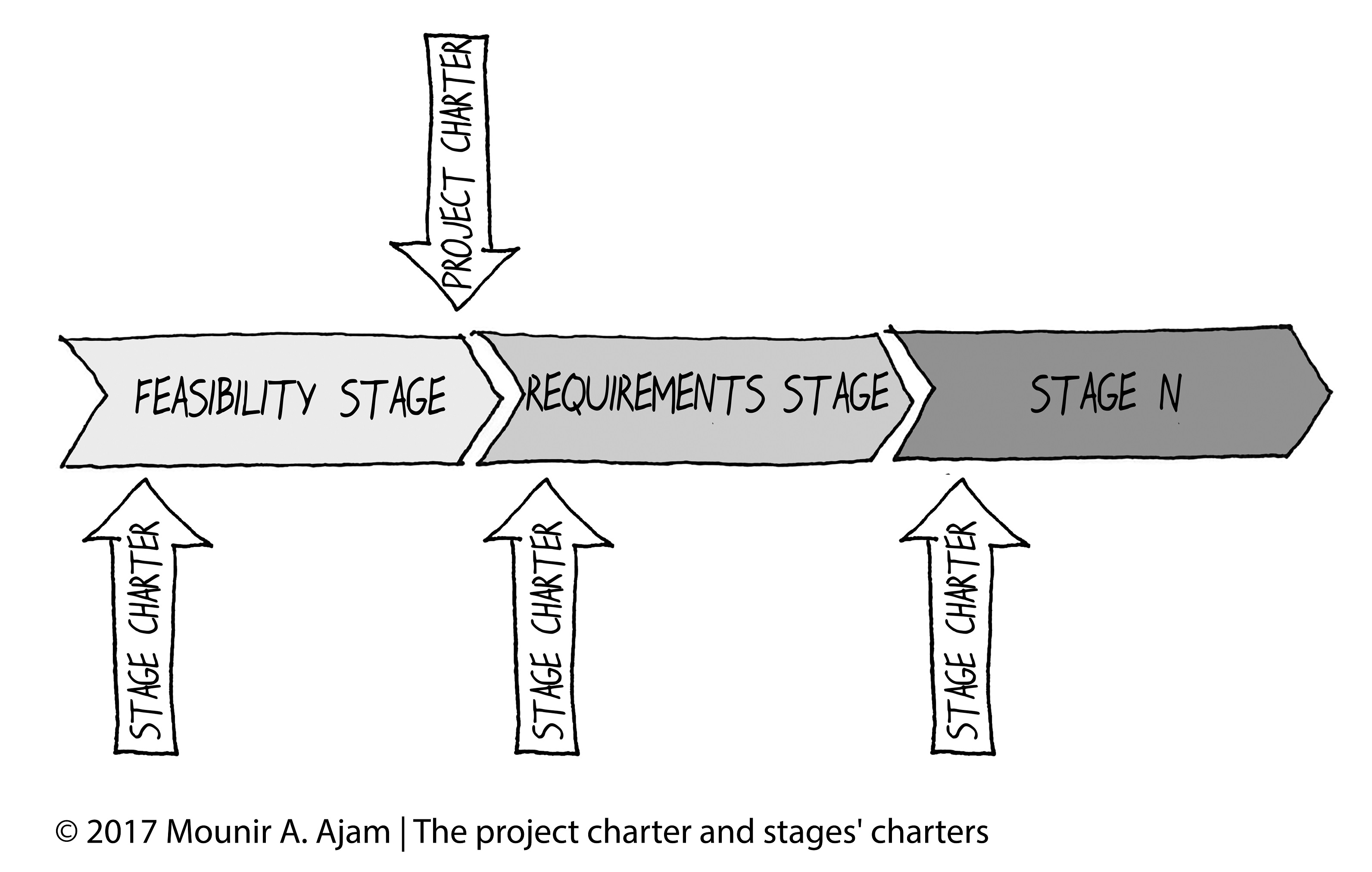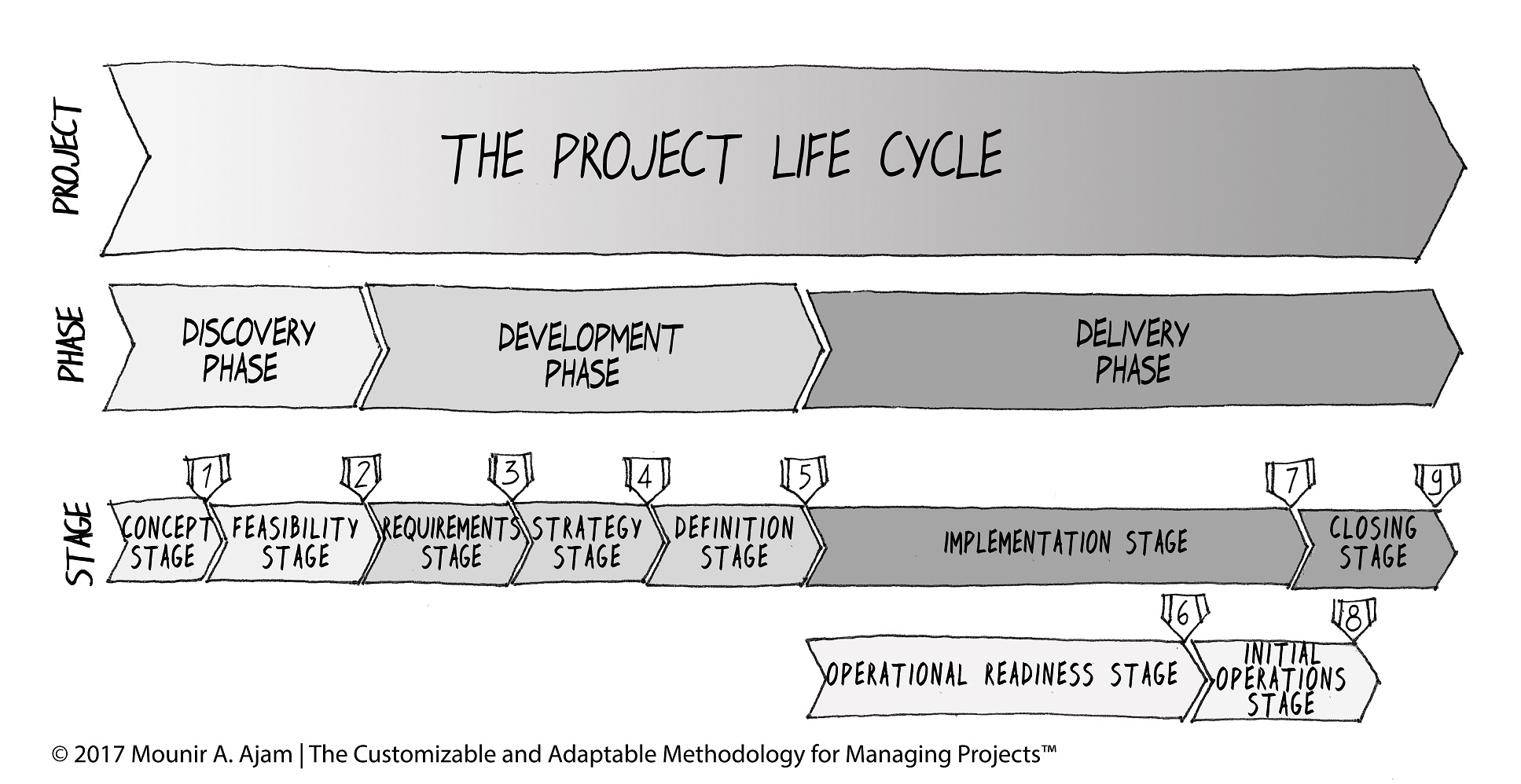Once again, what is the project life cycle?
Why this question?
Because it is our belief that the most common misunderstanding in project management today, especially among those who follow PMI and learned project management through the PMBOK Guide. Notice, we used the term misunderstanding because
the guide is clear on this point, yet many PM practitioners, Project Management Professionals, and even PMP “instructors-trainers’ do not understand the fundamental fact that:
- The process groups are not project phases, and
- The process groups are not the project life cycle.
The Common Understanding
It is quite common to hear, read, see posts with this confusion. When we ask practitioners to explain the project life cycle for us, they often answer with something like what the next image shows.

This image is in two parts.
- The top part is the view of the majority of practitioners that confuse the process groups with a project life cycle. This group thinks that four of the five process groups from PMBOK Guide or ISO 21500, are the project phases.
- The bottom part represents another misunderstanding and in this case, this group or people considers ‘controlling process group’ as a phase.
It is unfortunate that when we ask professionals and PMP holders the following:
- Do you understand that the ‘process groups’ are not ‘project phases’? The typical answer is YES.
- Do you understand that the guide (PMBOK or ISO) mentions that the process groups repeat in every phase? The typical answer is also YES.
Well,
- If the answer is yes, then why do we show the process groups as project phases? (the view in the above image). Maybe, some would answer, these are typical phases names. OK, we are willing to accept this and it is true that some organizations name their project phases per the above.
- In that case, how many charters do we have along the project life cycle? Here again, the typical answer is ONE. Yes, there is one PROJECT CHARTER but the Develop Project Charter is an initiating process, and the initiating processes must repeat in every phase. Therefore, the number of charters is a function of the number of phases. The next image represents this perspective and clicking on the image will take you to a past article on the subject.
The Project Life Cycle
Then, what does the project life cycle looks like?
It depends.
It depends on the industry, type of project, organizational preferences, etc. The following image is the standard (before tailoring) of the project life cycle per The Customizable and Adaptable Methodology for Managing Projects™ (CAMMP™).
Integrating the Process Groups into the Project Life Cycle
Once again, the PMBOK Guide and ISO 21500 are both clear that the process groups repeat in every project phase. Maybe not every single process will repeat but for any ‘substantial’ projects, most processes will repeat or their outputs are updated.

In the above image, we have six process groups, or six main processes, per CAMMP. This is a topic for another time.
Closing Remarks
The matter presented here is not trivial. It is not about semantics or terminology. It is at the heart of proper project management practice and for organizations seeking excellence and optimal performance. For small, simple projects with a few people and short durations, or single-phase projects (if such a project exists) confusing the process groups with project life cycle might not be OK and will not have a significant impact on the project outcome.
However, any ‘substantial’ project, medium to large and with some complexity, longer duration than a few weeks and requiring more than a few people, a project life cycle methodological approach is a must. There have to be a few phases and in each phase, we must apply the processes. Any deviation from this practice is like jumping out of an airplane without a parachute.
Notes
- All of the graphics are per a young aspiring professional, Ms. Judy Abi Roustom, Koura, Lebanon; concept per the author.
- These graphics and article are related to an upcoming book by the author that will be published by CRC Press. The book title is Project Management beyond Waterfall and Agile.



Trackbacks/Pingbacks